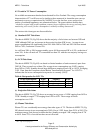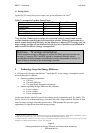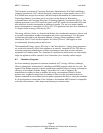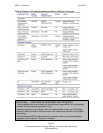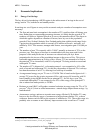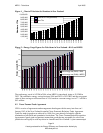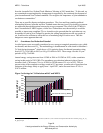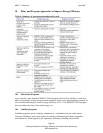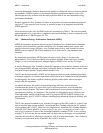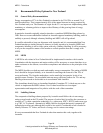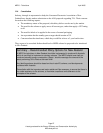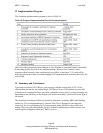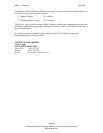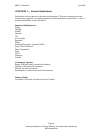MEPS − Televisions April 2005
Page 24
A study produced for the Energy Efficiency and Conservation Authority by
Wise Analysis Ltd
consumer information similar to that currently applied to whitegoods, but in a format regulated
by standards. A MEPS regime is a government regulatory programme that not only covers
labelling but actively excludes from the market products that do not meet minimum energy
performance standards.
Realistic options for New Zealand will either be associated with other international programs,
since our TVs are sourced from overseas, or included as part of an integrated Australasian
MEPS approach.
Ideas canvassed in the AGO NAEEEP report are summarised in Table 9. The most acceptable
option appeared to be to develop a comparative star-based labelling system in conjunction with
the introduction of a MEPS regime for TVs.
10.3 Minimum Energy Performance Standards (MEPS)
MEPS are documents produced under the aegis of Standards New Zealand and/or Standards
Australia, which means that a product sold on the New Zealand market must comply with
specific criteria for energy efficiency. New Zealand works closely with Australia to ensure
MEPS levels are aligned. All of these standards are, or will soon be, joint standards with
Australia.
By introducing a mandatory MEPS regime, the aim is firstly (Stage 1) to remove the
approximately 30% of the least efficient new products available at the retail level; secondly
(Stage 2) to move towards the more stringent Japanese MEPS levels, and the EU targets.
It may be difficult for New Zealand to match the Japanese levels in the first instance as they are
very stringent MEPS although our product is primarily based on Japanese and to a lesser extent
European designed product, largely manufactured in Asia.
The EU has not implemented a MEPS, but has targeted reductions with voluntary agreements
with major suppliers. A voluntary agreement could work in New Zealand but could potentially
be sabotaged by the smaller suppliers ratcheting up their market share without having to
comply with the agreement.
As utilised in Europe, the method of measuring energy efficiency should take into
consideration the screen size, aspect ratio, type of receiver/processor, scan rate and other
consumer-desired features. This ensures that manufacturers are not penalised simply for
providing more features for consumers. The formulae for determining energy efficiency are
called algorithms, and the methodology used for a proposed MEPS would be similar to the
approach used by the EU’s GEEA voluntary labelling program and the European Industry Self-
Commitment.
The EU has adopted a method of test, with the full support of the GEEA and EU, so there is no
need to consider other testing methods. Australia and New Zealand could use the EU method-
of-test standard (IEC 62087), which has been adopted as an Australian New Zealand Standard
(AS/NZS 62087:2004: Methods of measurement for the power consumption of audio, video
and related equipment). However the Australian standards committee TE001 is now working
with the EU in reviewing the test method, and it is likely that it will adopt a new method that
simplifies the current test, allowing a comparison with all screen technologies. New Zealand is
currently not represented on this committee, but could be included.



